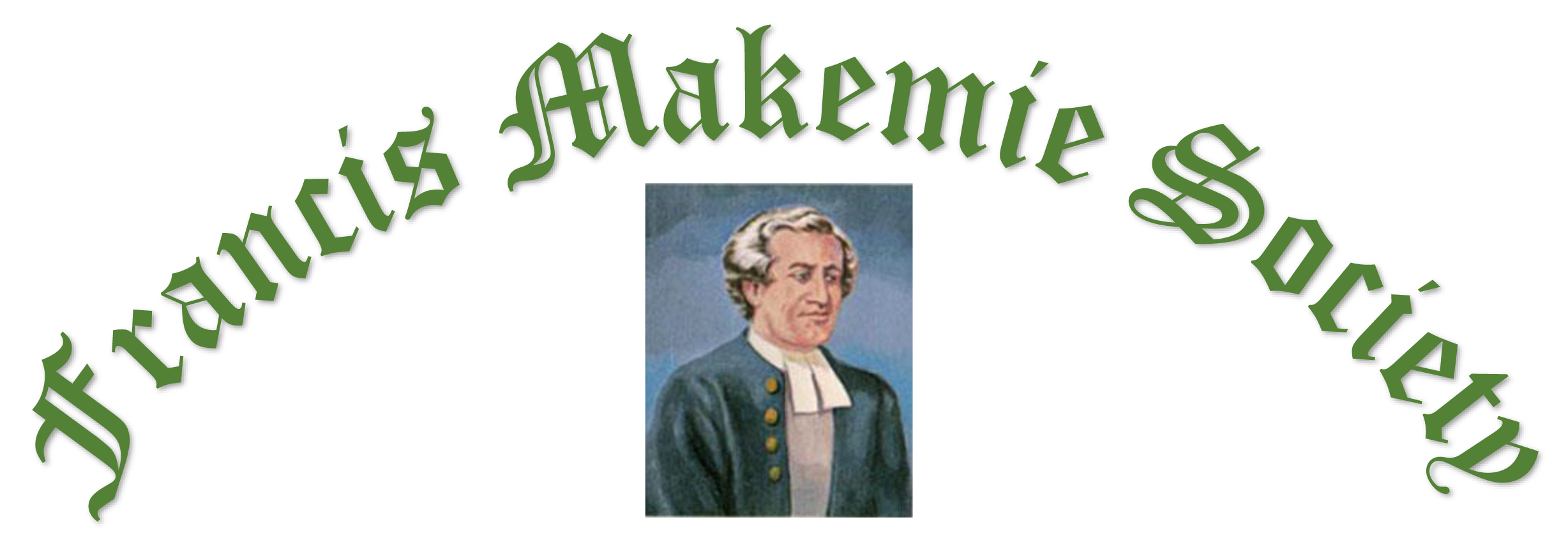

Rear view of the house shown in slide 2. The Poplar on extreme right is on bank of Holden Creek. The Makemie graves (as supposed) are between the tree and house. In the front of picture, the scattered shells of an imnence mound of oyster shells built by the indians over their dead. On the left of picture, the barnyard where relatives and friends of the Makemie family are buried.
Cradle of American Presbyterianism. Photographed 1900. Buring-ground along Holden's Creek, about ten miles from Rehoboth Church, Maryland, where Rev. Francis Makemie lies buried in an unmarked grave. He died in July, 1708.
View in garden back of house in No. 10. The bricks shown in lower right hand of picture were thrown up from two graves, one at foot of the other. These lay north and south, instead of east and west. The best local tradition points to these as the graves of Francis Makemie and his wife.
Corner of the barnyard over the graves of Makemie people. A Presbyterian preacher was buried where the buggy shed stands on the right. The trees in the rear are within the ruins of a brick cemetery wall. Remains of graves can still be traced.
Front view of the barnyard over the graves. The remains of old brickvault shown in the lower front of photograph. The manure is heaped up from two to four feet deep.
Writing desk of Rev. Francis Makemie, who willed it to his daughter, Madam Holden, who willed it to her Pastor, Rev. Samuel McMaster, who willed it to his son Samuel, at whose vendue it was sold to John B. White, who sold it to Rev. L.P. Bowen, D.D., who presented it as a Memorial of his wife to Union Theological Seminary of Richmond, VA. This photograph was made October 1, 1903, by H.P. Cook of 913 Main Street, Richmond, VA, at the request of John S. McMaster of Jersey City, NJ. For further details see "Sketch of Rev.Samuel McMaster" page 20.
View of Pocomoke river a little below Rehoboth, up which Makemie sailed to the Stevens home. River in the center of view; beyond it, a marsh of thousands of acres. (Mary Hampton's grave near bottom of photograph)
Cradle of American Presbyterianism. Photographed 1900. Old burying-ground, near Rehoboth, Maryland. (Mary Hampton's grave near bottom of photograph)
Cradle of American Presbyterianism. Photographed 1900. Makemie Memorial Prespyterian Church at Snow Hill, Maryland. Inscription on corner stone: MAKEMIE MEMORIAL CHURCH, erected 1887 and 1889. Organized by Rev. Francis Makemie A.D. 1683-84. Believed to be the first Presbyterian Church in America.
This is the original black walnut pulpit as brought from England by Makemie. The only changes made were to cut down the high pulpit as used in early times.
Interior of old Episcopal Church near the Rehoboth Presbyterian Church. Since this was taken, the church has crumbled still more into decay. The pews were square, seats on three sides.
Old Episcopal Church built in 1734 of English brick. This church is about one hundred yards from the Rehoboth Church and was built largely to crush out the one founded by Makemie. It is now entirely disused.
Cradle of American Presbyterianism. Photographed 1900. Wicomico Presbyterian Church at Salisbury, Maryland. Organized by Rev. Francis Makemie. This church, successor of the original, was built in 1859, remodeled in 1889.
Cradle of American Presbyterianism. Photographed 1900. Manokin Presbyterian Church at Princess Anne, Maryland. Organized by Rev. Francis Makemie.
Cradle of American Presbyterianism. Photographed 1900. Old Burying-Ground and rear of Rehoboth Church, Maryland.
Cradle of American Presbyterianism. Photographed 1900. Village of Rehoboth at the great bend of Pocomoke River, Maryland.
Cradle of American Presbyterianism. Photographed 1900. Rehoboth watermill, on the site of the one by Colonel Stevens.
Cradle of American Presbyterianism. Photographed 1900. Site and ruins of the house of Col. Stevens, near Rehoboth, Maryland. It was though Stevens'influence that Makemie was sent by the Presbytery of Laggan, Ireland, to Maryland. In the doorway of this house during the winter of 1673 George Fox, founder of the Society of Friends, stood in his famous "leather breeches" and preached to many people, including Indians.
In the foreground, tomb of Stevens, protector and patron of Makemie. In the centre of picture, cedar tree marks the site of the Stevens home shown in slide 24.
Cradle of American Presbyterianism. Photographed 1900. Tomb of Colonel Stevens, on the farm he owned, near Rehoboth Church. Incription:
Here Lyeth the Body of
WILLIAM STEVENS, ESQ,,
Who Departed this Life the
23 of December, 1687.
Aged 57 Years.
He was 22 years Judge of this County
Court, one of His Lordship's Councill,
and one of ye Deputy Lieutenants of this
Province of Maryland.
Vivit post Funera Virtus.